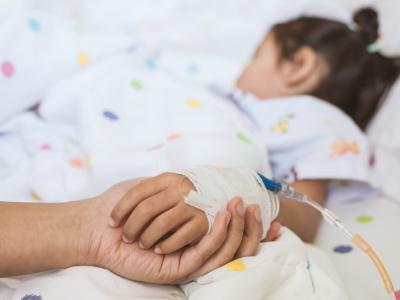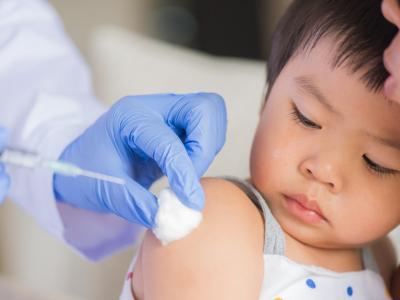HHS government shutdown plan would hamper flu, food safety responses
With the threat of a US federal government shutdown at midnight today because of expiring temporary appropriations and no Congressional passage of a continuing resolution to fund the government, the US Department of Health and Human Services (HHS) released a staffing contingency plan. Among several of its impacts, it would hamstring seasonal flu and outbreak detection activities at the Centers for Disease Control and Prevention (CDC) during the midst of what's shaping up to be a severe season (see related story today).
Overall, the funding lapse would furlough half of the HHS staff, affecting 40,959 employees. Activities that won't be affected as much include those that don't rely on appropriations and those that directly protect human life and property.
The Assistant Secretary for Preparedness would maintain core readiness, including medical countermeasure response. The National Institutes of Health would continue patient care at its clinical center, maintain minimal support for study protocols, and look after lab animals.
At the CDC, activities will continue at minimal levels, with reduced capacity to respond to outbreaks, process lab samples, and staff its emergency operations center. The agency would be unable to support genetic and molecular analysis activities across state boundaries. It would, however, continue its work on hurricane response and on programs that receive mandatory funding, such as Ebola response and Global Health Security Agenda implementation.
Meanwhile, the Food and Drug Administration would continue vital consumer protection and public health activities, such as responding to emergencies and handling high-risk recalls. Most routine food safety activities, though, would be affected, including routine establishment inspections.
Jan 19 HHS staffing contingency plan
One new MERS case, death recorded in Saudi Arabia
The Saudi Arabian Ministry of Health (MOH) noted a new case of MERS in the village of Al Qaryat and the death of a previously reported patient, in the first updates released by the MOH in nearly a week.
In an update yesterday, the MOH said a 60-year-old Saudi woman from Al Qaryat is in critical condition after being diagnosed as having MERS-CoV (Middle East respiratory syndrome coronavirus). The woman's source of infection is listed as "primary," meaning it's unlikely she contracted the virus from another person.
Earlier in the week the MOH said a 69-year-old Saudi man from Najran had died from complications of MERS-CoV infection.
The latest reports lift Saudi Arabia's total since the virus was first detected in humans in 2012 to 1,776, which includes 724 deaths. Seven people are currently being treated for their infections.
Jan 16 MOH report
Jan 18 MOH report
Scientists report mutated virus that may lead to 'universal' flu vaccines
A mutated influenza A virus created by scientists at the University of California–Los Angeles (UCLA) may one day prove beneficial in the search for a "universal" flu vaccine that could protect against multiple strains of the virus and not need to be given annually, according to a study today in Science.
Using whole-genome analysis of flu viruses, the researchers identified genes that allow the virus to escape attacks by type 1 interferon (IFN-1) proteins, which constitute the body's first line of defense against them. By mutating these genes and combining these mutations into one virus, the team created a hyper-interferon-sensitive (HIS) strain that replicated well in the lab but showed reduced virulence in lab animals, both of which are desired properties for viruses used in flu vaccines.
"If viruses do not induce interferons, they will not be killed in the first-line defense; and without interferons, the adaptive immune response is limited," said senior author Ren Sun, PhD, in a UCLA news release. "For these reasons, viruses have evolved strategies to evade detection and limit the production of interferons by host organisms."
"Other researchers have knocked out one anti-interferon sequence," said lead author Yushen Du, "but we knocked out eight locations by changing one amino acid at a time."
Mice and ferrets inoculated with the new HIS virus exhibited higher IFN-1 production and response, leading to robust immunity against multiple strains of influenza, the investigators reported. They conclude, "Our approach, which attenuates the virus and promotes immune responses concurrently, is broadly applicable for vaccine development against other pathogens."
Jan 19 Science study
Jan 18 UCLA news release
Brazil confirms 34 recent yellow fever cases as ECDC alerts travelers
Brazil has reported 30 yellow fever cases in December and January, and officials in Europe are cautioning travelers about vaccination if they plan to travel to urban areas, including for the upcoming Carnival event in Rio de Janeiro, the European Centre for Disease Prevention and Control (ECDC) said in separate announcements.
In an updated rapid risk assessment yesterday, the ECDC said the country has reported 34 lab-confirmed cases, including 20 deaths, for a case-fatality rate of 57%, since Sep 1, 2017. All but 4 of those cases were confirmed in December and January. The confirmed cases were reported in the states of Sao Paulo (20 cases, 11 deaths), Minas Gerais (11 cases, 7 deaths), Rio de Janeiro (2 cases, 1 death) and in the Federal District (1 fatal case).
In addition, in December, officials confirmed yellow fever in monkeys in urban parks in the Sao Paulo metro area and closed several parks. Authorities are also investigating the death of four monkeys in the Tijuca Forest near Rio that may have been caused by the virus.
In a news release today based on the risk assessment, the ECDC says, "EU/EEA travellers to areas at risk of yellow fever in Brazil should check their vaccination status and if necessary get vaccinated." Carnival, which attracts millions of people, will take place from Feb 9 to 14. Almost 1 million Europeans travel to Brazil from January to May, according to the risk assessment.
Jan 18 ECDC rapid risk assessment
Jan 19 ECDC news release
New wild poliovirus case reported in Afghanistan
A new case of wild poliovirus type 1 has been identified in the Kandahar Province of Afghanistan, according to the latest weekly report today from the Global Polio Eradication Initiative (GPEI).
Symptom onset for the Afghani case was Dec 28, which means the case is considered in 2017's total. Afghanistan reported 14 cases of polio in 2017. Five million children will be targeted next week during an oral polio vaccine campaign in that country.
As mentioned last week in an advanced notice, the Democratic Republic of the Congo has five cases of circulating vaccine-derived poliovirus type 2 (cVDPV2) in Tanganyika province. All of these cases had symptom onset in November.
"Outbreak response continues to take place across the country, including use of monovalent oral polio vaccine type 2 (mOPV2) in line with internationally-agreed outbreak response protocols. Children living in the districts where the latest cases were reported were last targeted with mOPV2 during December vaccination days,” the GPEI said.
Jan 19 GPEI report











